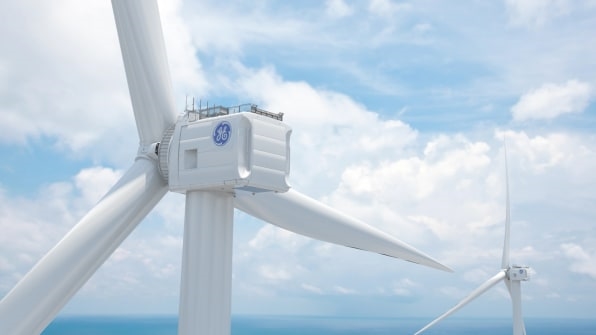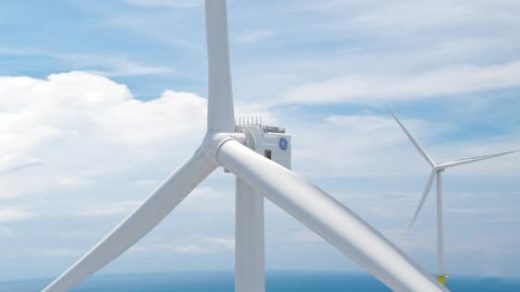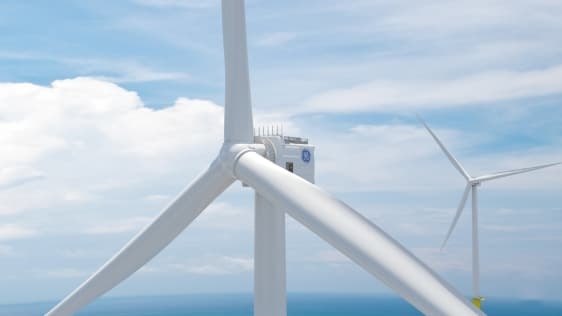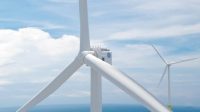Here’s The World’s Most Powerful Wind Turbine
In the world of offshore wind energy, bigger is normally better. Larger wind turbines reach higher in the air, where the wind is stronger. Bulkier blades capture more wind. And bigger turbines mean you need fewer, and so are more economical because developers need to drill fewer pilings into the ocean floor and prepare and maintain fewer platforms.
GE Renewable Energy this week announced what it calls the world’s most powerful wind turbine– 12-megawatt Haliade-X–and it’s a whopper. At 853 feet high, it’s roughly three times the size of New York City’s Flatiron Building (which has 21 floors). Due for commercial operation in 2021, the turbine has 45% more capacity than today’s standard 8 MW turbines, according to the company.
Bigger, more powerful turbines are key to getting more offshore wind in the U.S. We currently have only one offshore wind farm–the Block Island Windfarm, in Rhode Island. But 25 projects, with a total capacity of 24 gigawatts, are now planned along the East Coast, partly because the economics are now more favorable. The U.K., Germany, and Denmark already have hundreds of offshore plants with a total installed capacity of 12 gigawatts.

“We see a growing demand and a growing opportunity for offshore wind in the U.S.,” says GE Renewable Energy’s CEO, Jérôme Pécresse, in an interview. “It may evolve slowly at first but once it takes off, we expect it to get a lot bigger. By doing the Block Island project, we have demonstrated that we can do offshore wind in the U.S.”
GE’s turbines, though powerful, are not even the biggest on the market. Developers in Europe are going higher than 1,000 feet and talking of expanding capacity to 13 or 15 MW per turbine. More experimental machines, like one developed at Sandia Labs and Lockheed Martin, are designed to be in the 50 MW range. Its 328 foot long blades are designed to collapse inwards, so they don’t break apart at high wind speeds.
To be economical in the future, offshore wind turbines will need to survive without government subsidies. U.S federal tax credits for wind projects are due to start phasing out in 2020. Recently announced wind projects in Europe, due for deployment in the mid-2020s, are contracted without government support, partly because the size of the turbines involved allows it. Prepare to start seeing massive white windmills all along the coastline.
(36)







